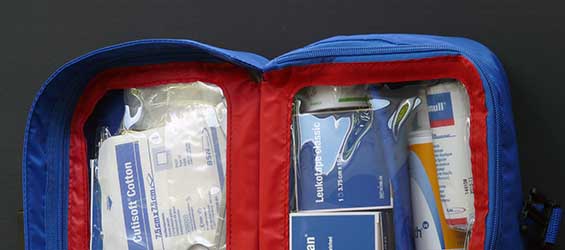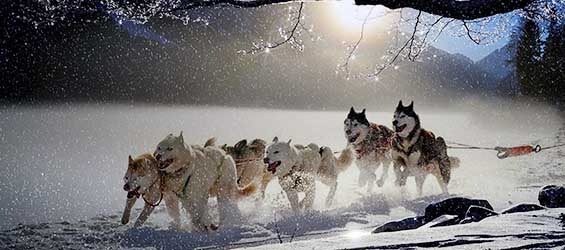When Mother Nature throws wicked winter weather our way—which is kind of a lot here in Chester County, right?—the difference between being safe and stranded can often come down to how prepared you are.
These tips will help you make sure you’re ready for whatever happens on the road, and alleviate some of the anxiety of road tripping in winter.

1. Prepare your car or truck
Make sure that you’ll actually get to Gramma’s house in the mountains by preparing the car for the trip.
Here are the most important factors for your vehicle in the winter weather.
Antifreeze
Check the car’s antifreeze and top it off, if needed. The manual that came with your vehicle will instruct you on how to check the levels
It’s not just the level, however, that you should inspect, but the mixture as well. Inexpensive commercial testing kits are available at auto supply stores. Thoughtco.com offers a handy walk-through of the testing process.
Tires
How are the tires looking? Check the pressure and add air if necessary. Then, check the tread using the penny, as suggested by justtires.com.
Insert a penny into the tread “with Lincoln’s head upside down and facing you,” they suggest. “If you can see all of Lincoln’s head, your tread depth is less than 2/32 inch and it’s time to replace your tires.”
In particularly wicked winter weather you may want to consider buying winter tires before hitting the road.
“In places where snow and ice prevail for several months a year, the average driver will exceed all-weather tires’ grip limits multiple times a day,” according to Mack Demere, at Edmunds.com.
Motor Oil
The experts at dmv.org claim that mechanics recommend a thinner motor oil for cars driven in areas with sub-freezing temperatures.
Talk to your mechanic before you have an oil change to find out what they recommend.
Wiper Fluid
Fill the windshield wiper fluid reservoir with a freeze-resistant fluid. That one’s easy!
Other
Check the brakes, battery, and heating system at least a few weeks before you leave. If any of those stop working, it’s time for a trip to the mechanic!

2. Create an emergency kit for the car
Your vehicle emergency kit should include:
- Blankets for each occupant — bonus points if you pick up a car-charger electric blanket
- Ice scraper and/or liquid deice
- Shovel — never know when you’ll need to dig out from your parking spot!
- Bottled water — be prepared for these to freeze!
- Non-perishable food — preferably dry items that won’t freeze
- LED flashlights
- Road flares
- Extra clothing — especially shoes or boots and socks
- First-aid kit
- Basic tools — multi-tool, allen wrenches, ratchet sets, etc)
- Jumper cables — at least 16 feet in length, according to itstactical.com
- Matches or lighters
- Sand — to pour under the tires, if needed
- Extra phone charger — multiple if you’re traveling in a group
- Battery-powered radio and extra, fresh batteries
- Tow chain or rope
- Fluorescent distress flag

3. If you get stuck
Disasters happen when travelers make the wrong decisions about whether to stay put or go for help when they’re stuck on the road during a snowstorm.
If you can’t see a safe location nearby, if you broke down on a road where rescue is unlikely, if you’re not dressed for the weather or you don’t have a way to call for help, pull off the highway, turn on the car’s hazard lights and stay inside the vehicle.
Run the engine and heater once an hour for about 10 minutes to keep warm. During these sessions, “open a downwind window slightly for ventilation and periodically clear snow from the exhaust pipe. This will protect you from possible carbon monoxide poisoning,” suggests the Department of Homeland Security.
If you don’t have a blanket, use whatever you can find in the car for insulation, such as seat covers, road maps and floor mats. Light exercise will also help you maintain body heat.
If, on the other hand, you are dressed for the weather (several layers of warm clothing with moisture-repellent outerwear, mittens, hat and a scarf to cover your mouth), the conditions outside are relatively safe and there is a nearby source of help, leave the vehicle to seek assistance.

4. Additional considerations
Even the best-prepared road trips can run into trouble.
- During heavy snowstorms, drive only if it is absolutely necessary
- Always let someone know where you are going, which route you’ll be taking, and your estimated time of arrival. Stick to the route without taking shortcuts.
- Monitor local weather conditions.
Taking simple steps before your road trip keeps you from being at the mercy of severe winter weather!

Bonus: what’s your favorite travel story?
If you’ve got a funny or amazing story of your travel plans going all wrong, we’d love to hear it!
Car broke down in the snow? Drove off the road and had to shovel out? We want to know!
Share your story and we’ll add it to this post!
